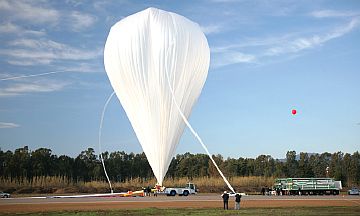The international airport of Tortoli-Arbatax is located in the eastern coast of the Sardignia Island near 140 km from Cagliari, between the small city of Tortoli and the harbour zone of Arbatax, hence his name. Originally it was created to help to improve the commercial activity of the Arbatax port.
In 1975 the strip was asphalted and extended to 1.190 meters of longitude. Also was added a control tower and a hangar and in 1986 started the first commercial flights by a local airline Air Sardignia. This activity endured near 4 years until 1990 when the company ceased with all activities and thus the airport was closed. In 1993 several private investors from the Mazzella group took the management of the airstation and in September the first flight for the Air Dolomiti company was conducted, inaugurating a new phase of activity mainly based in chartered flights for tourists in the summer months.
Nowadays, the airport is a key piece of the local turistical industry having a mean annual traffic of near 50.000 passengers.
Space planes and balloons

When the Italian Space Agency received in 2002 the proposal to launch under a stratospheric balloon a model of a future space plane belonging to the USV (Unmanned Space Vehicle) program intended to be droped in free fall over the sea, it was decided to perform the mission from the Luigi Broglio Balloon Base in Trapani using for the test the sea portion in front of the Sicilian West coast as ocurred before with similar projects carried out by the Agency. Nevertheless, after several delays mainly related to unsuitable weather conditions, the reversal of wind trajectory from the summer to winter, forced the Agency to make a choice: to delay for a full year the test or to select another site. The second option was taken and after careful examination, the location finally elected to carry out the mission during the winter months launch window was the Tortolí/Arbatax airport.
The election was drived mainly by the location of the airport (very near the sea shore) and close enough to a restricted air and sea zone managed by the military facility of the Salto di Quirra interforce range, located in southeast Sardinia near the town of Perdas de Fogu. The later assured a plane/ship free zone to perform the test safely.
After several delays and even cancellations, the mission was completed succesfully on Febraury 2007 with the launch of a balloon of 350.000 m3 of volume that transported the "Castore" vehicle to a height of 20 km from where it was released over the sea.
After that first drop, preparations started for the second one mission which would use a twin vehicle denominated "Polluce". The second drop was carried out in the same manner in April 2010, with an outstanding success.
After these missions the airport was not used again for this activity.
Details of the two balloon missions
| Date | Hour | Flight Duration | Experiment | Payload landing place or cause of the failure |
|---|---|---|---|---|
| 2/24/2007 | 8:30 local | 3 h | USV (Unmanned Space Vehicle) - CASTORE | In the Mediterranean sea |
| 4/11/2010 | 8:45 local | 3 h | USV (Unmanned Space Vehicle) - POLLUCE | In the Mediterranean sea |
If you consider this website interesting or useful, you can help me to keep it up and running with a small donation to cover the operational costs. Just the equivalent of the price of a cup of coffee helps a lot.

